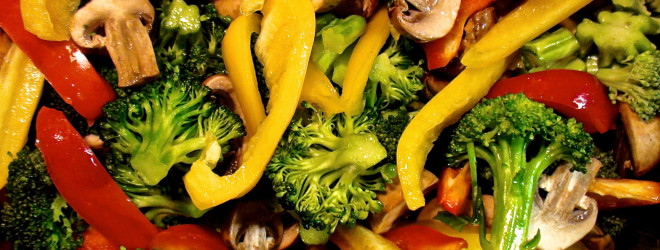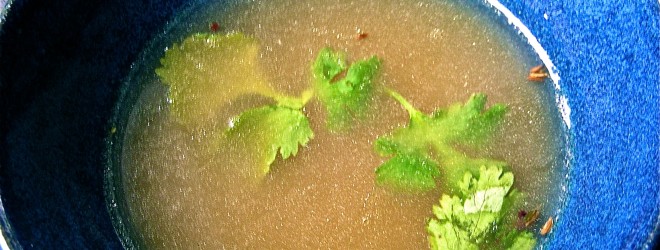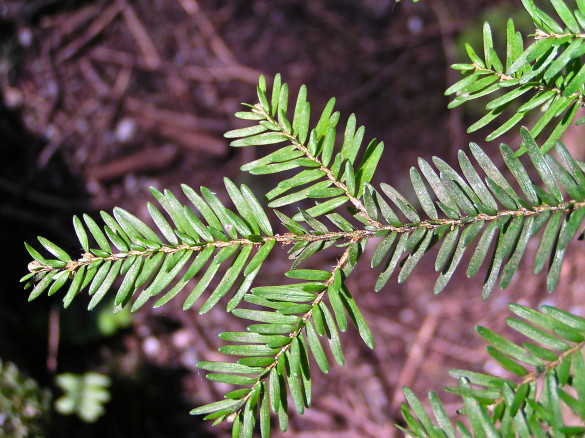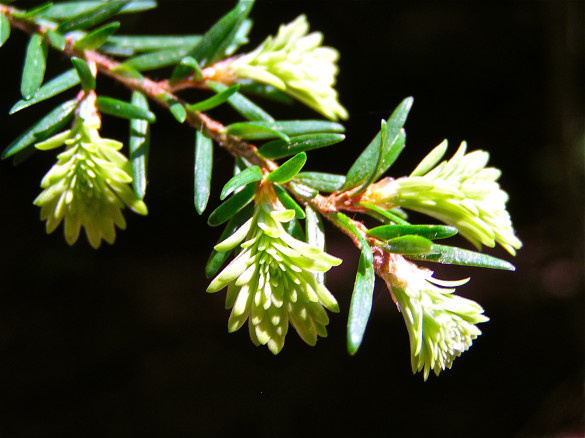In 15 years of clinical practice I have seen dietary trends rise and fall, but one trend that I have seen steadily increase is raw-food veganism. Too often I see folks like this in my practice, who based on an ethical choice informed more by aesthetics, dogma and inference, have ended up doing real harm to their bodies. So in the interest of public health I am out to bust some myths around raw food veganism, in favor of an awareness that is more informed and nuanced. Quotes and research pulled from my new book, Food As Medicine.
Humans evolved eating raw food.
“Compared to our primate cousins, humans have a much smaller gut and yet characteristically larger brains (i.e. a higher encephalization quotient). Research suggests that cooking enhanced the efficiency of nutrient absorption, allowing for the evolution of a much smaller absorptive surface and hence smaller digestive tract, while at the same time boosting the energy intake required for the characteristically larger and more complex human brain.” p. 108
Carmody RN, Wrangham RW. 2009. The energetic significance of cooking. J Hum Evol. 57(4):379-91
Humans evolved as vegetarians.
“Researchers at the University of Colorado suggest that whenever possible our early ancestors preferred animal foods as their primary source of nutrition, comprising between 45-65% of their total energy intake, supplementing the remaining percentage with plant foods.” p. 93
Raw foods contains enzymes necessary for digestion.
“If it were true that these enzymes were necessary for digestion it would stand to reason that the body would not need to produce its own enzymes, when in reality the body produces up to five liters (1.3 gallons) of digestive juices on a daily basis. Like all proteins, enzymes are denatured and digested in the gut into their constituent peptide fragments, rendering them devoid of any significant enzymatic activity.” p 107
Raw food has a higher nutrient content than cooked food.
“While cooking does reduce the nutrient content in some foods, it dramatically enhances nutrient bioavailability, offsetting any loss in nutrients by reducing the energy required for digestion and assimilation. According to anthropologists humans have been cooking food for more than a million years, and in the process have undergone both anatomical and physiological changes that reflect our reliance upon it.” p. 108
Cooking destroys the healthy bacteria such as Lactobacilli.
“Unless the raw food has been fermented to allow these ‘friendly’ bacteria to out-compete other microbes however, raw food may also contain pathogenic bacteria such as Campylobacter, Clostridium, Salmonella and Escherichia coli. Other potential pathogens in raw food include pathogenic viruses (e.g. norovirus, enterovirus, hepatitis A virus), pathogenic fungi (Aspergillus, Fusarium) and parasites (Giardia lamblia, Entamoeba histolytica) that can cause both acute and chronic illness. In contradistinction to the claim that raw food is healthy, there are an estimated 76 million food-borne illnesses each year in the United States, accounting for 325,000 hospitalizations and 5,000 deaths, all from eating raw or improperly cooked food.” p. 108
The vegan diet is higher in nutrients than non-vegetarian foods.
“While it is very true that a vegan diet is abundant in healthy foods such as vegetables and fruits, without rigorous supplementation it is also deficient in key nutrients including protein, omega-3 fats, cholesterol, iron, calcium, iodine, vitamin D3 and vitamin B-12. Among proteins, the vegan diet is deficient in important amino acids such as carnosine, a dipeptide found in muscle tissue that has been shown to suppress many of the biochemical changes that accompany aging, diabetes and neurodegenerative disorders.” p. 106
Li D. 2011. Chemistry behind Vegetarianism. J Agric Food Chem. [Epub ahead of print]
Craig WJ. 2009. Health effects of vegan diets. Am J Clin Nutr. 89(5):1627S-1633S.
Hipkiss AR. 2006. Would carnosine or a carnivorous diet help suppress aging and associated pathologies? Ann N Y Acad Sci. 1067:369-74
Science has proven that the raw vegan diet is healthier.
“Research backs up the assertion that a long-term vegan diet impairs health, promoting weight loss, premenstrual syndrome and infertility, impaired bone density, bone fracture, dental problems, and immunodeficiency. A vegan diet is especially problematic and even dangerous in pregnant or lactating mothers as well as young children, increasing the risk of anemia, neurological disorders and developmental delay.” p. 106
Koebnick C, Strassner C, Hoffmann I, Leitzmann C. 1999. Consequences of a Long-Term Raw Food Diet on Body Weight and Menstruation: Results of a Questionnaire Survey. Annals of Nutrition & Metabolism. 43:69-79
Ambroszkiewicz J, Klemarczyk W, Gajewska J, Chelchowska M, Franek E, Laskowska-Klita T. 2010. The influence of vegan diet on bone mineral density and biochemical bone turnover markers. Pediatr Endocrinol Diabetes Metab. 16(3):201-204
Krivosíková Z, Krajcovicová-Kudlácková M, Spustová V, Stefíková K, Valachovicová M, Blazícek P, Nemcová T. 2010. The association between high plasma homocysteine levels and lower bone mineral density in Slovak women: the impact of vegetarian diet. Eur J Nutr. 49(3):147-53
Appleby P, Roddam A, Allen N, Key T. 2007. Comparative fracture risk in vegetarians and nonvegetarians in EPIC-Oxford. Eur J Clin Nutr. 61(12):1400-6
Laffranchi L, Zotti F, Bonetti S, Dalessandri D, Fontana P. 2010. Oral implications of the vegan diet: observational study. Minerva Stomatol. 59(11-12):583-91
Labay y Matías MV, Matamoros Florí N, Aguiló Regla A, Tomás Cardús L, Galiana Ferré C, Gómez Rivas B, Reynes Muntaner J. 1984. Strict vegetarian diet, malnutrition, immunodeficiency and infection. An Esp Pediatr. 20(1):69-71
Baatenburg de Jong R, Bekhof J, Roorda R, Zwart P. 2005. Severe nutritional vitamin deficiency in a breast-fed infant of a vegan mother. Eur J Pediatr. 164(4):259-60
Mariani A, Chalies S, Jeziorski E, Ludwig C, Lalande M, Rodière M. 2009. Consequences of exclusive breast-feeding in vegan mother newborn: case report Arch Pediatr. 16(11):1461-3
Still want to be a vegetarian?
Learn from the Indians, who have been doing it for thousands of years. While my recommendations with regard to diet are purely pragmatic, I understand why some people still want to be a vegetarian. “Although vegetarianism has become increasingly mainstream in the West I am consistently surprised how few have researched the components of an Indian vegetarian diet, which would otherwise seem to be a pre-requisite. Apart from a diet necessarily rich in grains, pulses, nuts and seeds to supply the proteins and fats that are otherwise missing from a meat-free diet, the hallmark of Indian vegetarianism is the regular consumption milk and milk products. The importance of consuming dairy is clearly seen in the Hindu’s veneration of the cow, which serves not only as an allegory of spiritual love, but provides a source of nutrients that are otherwise difficult to get in a vegetable based diet. Employing a variety of dairy-based foods including boiled milk (p. 173), yogurt (p. 174), panir and ghee (p. 194) not only provides for a density of fats and proteins unmatched by any vegetable-based food, it also provides vital nutrients such as essential fatty acids, calcium, potassium, magnesium and cholesterol that are difficult to get from a strict vegetable-based diet. Beyond the ubiquitous presence of dairy the other feature commonly found in Indian cuisine is the diverse abundance of herbs and spices that not only enhance digestion to increase nutrient bioavailability, but contributes essential minerals and antioxidants that support health. My recommendation for all who want to become vegetarian is to learn to cook Indian food, and the different ways to prepare dairy products, legumes and grains, and how to use herbs and spices. It doesn’t mean that Indian food needs to be eaten exclusively, but that the strategies used to prepare and enhance the food are employed in a similar manner.” p. 104
Weaver CM. 2009. Should dairy be recommended as part of a healthy vegetarian diet? Point. Am J Clin Nutr. 89(5):1634S-1637S Tapsell LC, Hemphill I, Cobiac L, Patch CS, Sullivan DR, Fenech M, Roodenrys S, Keogh JB, Clifton PM, Williams PG, Fazio VA, Inge KE. 2006. Health benefits of herbs and spices: the past, the present, the future. Med J Aust. 185(4 Suppl):S4-24.
Comments? Love to hear them!






